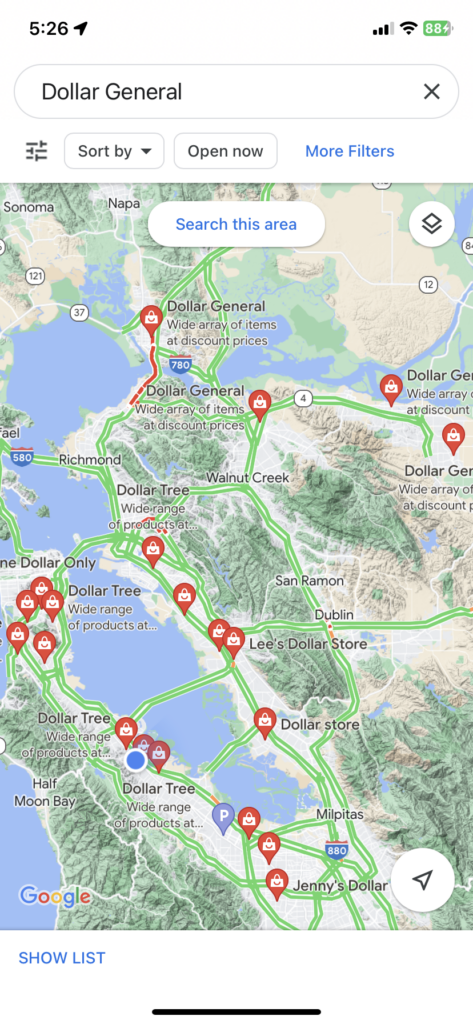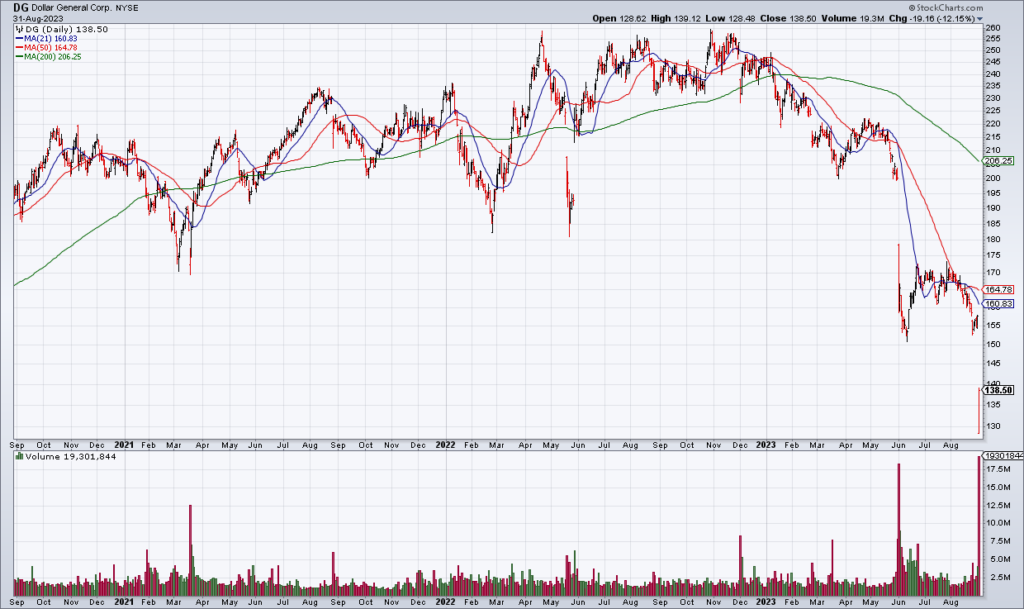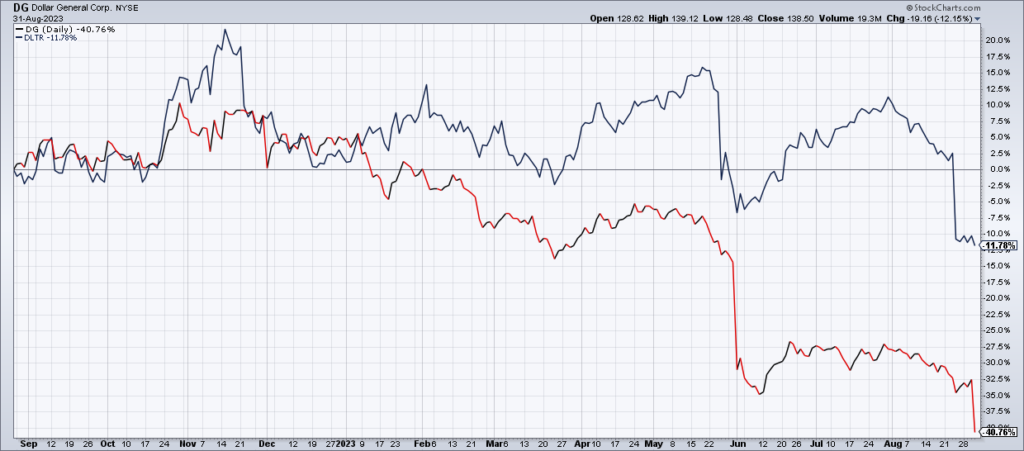DG’s Struggles: Economic and Political Implications; Adding To My Position



Perhaps the most important data point this week came from Dollar General (DG) when it reported its second straight disastrous quarter Thursday morning. For the second quarter in a row, DG lowered its full year guidance. DG is now expecting comps from -1% to +1% and EPS of $7.10-$8.30. On June 1, DG guided comps to +1% to +2% and EPS to -8% to flat compared to 2022 (which works out to $10.25 at the midpoint). That’s a 25% reduction to its full year EPS guidance. The Wall Street Journal’s Will Feuer wrote an article [SUBSCRIPTION REQUIRED] about DG on the front of today’s Business & Finance section.
What’s going on here? One mystery to me when I first started looking into this was why competitor Dollar Tree (DLTR) is holding up so much better than DG. The answer occurred to me when I did a search for local DGs and DLTRs. I live in San Carlos which is a nice town in the Silicon Valley and I was able to find a number of DLTRs near me and on the peninsula – but no DGs. If you look closely at the map, you have to go quite far north and east to find the four closest DGs. They are in Vallejo, Antioch, Concord and Brentwood. The latter are significantly less wealthy towns than those in which there are DLTRs. In other words, while both DLTR and DG cater to a lower class customer, based on its store locations DG appears to cater to an even lower one. Its poor results overall and relative to DLTR therefore suggest that the lower class in America is in a world of pain.
I have written about the haves and the have nots many times before and it’s the thesis behind my positions in a number of stocks catering to the lower class like Centene (CNC) and McDonalds (MCD). I’m adding to my position in DG because while it’s struggling, its customers have nowhere else to go. I’m long Walmart (WMT) and Costco (COST) because of the value they provide to the middle class and I’m long DLTR and DG for the value they provide to the lower class. Both segments are under pressure IMO.
Obviously there are broader macro economic and political implications as well. While tech workers in the Silicon Valley are doing exceedingly well, the lower class is going in the opposite direction. This is a microcosm of the entire country IMO. Inequality is increasing and society is increasingly divided into haves and have nots. We’re potentially headed for a bitter Presidential Election rematch a year from now between Biden and Trump (see Dan Henninger, “The Stupid Party Vs The Evil Party” [SUBSCRIPTION REQUIRED], WSJ, August 31). In other words, the United States is seething with economic and political tension. Can we hold together with so much pulling us apart? There is reason to be concerned.
